Unprocessed FAQ: Flours & Grains
Sep 26, 2019

In today’s October Unprocessed FAQ, I’m going to try to clear up some confusion surrounding one of our most common ingredients: Flours and grains.
“Intact” Grains
Although you probably won’t hear “intact” very often when it comes to grains (it’s not common on labels), it’s the best word I’ve found to describe them. The idea is that it’s the whole grain, completely intact as nature made it — it hasn’t been cut, ground, or pulverized in any way. When you buy a bag of whole kernels of barley, wheat, rye, farro, kamut, spelt, teff… all that’s been done to it is that it’s been harvested, cleaned, and dried (and, if it’s not organic, probably sprayed with pesticides). You could do all that at home (though it’s probably not worth the effort!), so those totally pass the kitchen test.
“Whole” Grain
Anything that includes the entirety of the grain — the bran, germ, and endosperm — can be called “whole grain,” even if it’s been ground up (or even separated and put back together). Steel-cut oats, for example, would be whole grain, since they start with intact oats, and then cut them with steel blades. (Here’s more on oats and oatmeals.)
Here are some of the things to watch out for on labels when you’re shopping for whole grain products.
“Whole Grain Flour”
This is really just taking the grain and grinding it down even more, until it’s a fine powder. For it to be called “whole,” it still needs the bran, germ, and endosperm — though technically, it’s legal to separate all the components and then put them back together.
In a previous October, Cassidy from Bob’s Red Mill shared a very informative post about flour — it’s well worth the read.
Refined Flours, or simply: “Flour”
It’s safe to assume that anything called “flour” without the word “whole” preceding it has been refined — it’s lacking the nutrient-rich germ and bran. It might be called “All Purpose Flour,” or “Unbleached Flour” or simply, “Wheat Flour.”
By law in the United States, unless it’s certified organic, manufacturers are required to add back in some vitamins, because the refining process strips them out. In Canada, even organic flour must be enriched.
Theoretically, you could grind your own grains at home, and then take the resulting whole grain flour and pass it through finer and finer sieves, until you’ve sifted out all the bran and germ, leaving just the light endosperm. You’d probably never do it, but in theory you could.
To bring this back to the Kitchen Test, then: Strictly speaking, “unbleached, unenriched flour” will pass the test. (That does not mean I’m suggesting you eat it.) But if it’s been bleached or enriched — two things you wouldn’t do at home — it doesn’t pass the test.
Watch out for the “Wheat Bread” trick that many companies and restaurants play, trying to make you think it’s healthier than any other bread. All it means is that it’s made with wheat flour, which is most likely refined. Your best bet is to get “100% Whole Wheat Bread,” and short of that, seek out “Whole Wheat Bread.”
“White Flour” and “White Whole Wheat Flour”
This is very confusing. Most flour (whole or refined) these days comes from a species of wheat called “red wheat.” If you buy a bag of white flour, it’s probably been milled and refined (and bleached) from red wheat. However, “White Whole Wheat” refers to whole wheat flour that comes from “white wheat,” a different species.
So regular wheat flour probably comes from red wheat. “White Whole Wheat Flour” actually comes from white wheat. Got it? (If not, check out this on Wikipedia.)
Recently, Bob’s Red Mill rebranded their “Organic Hard White Whole Wheat Flour” (pictured above) as “Organic Ivory Wheat Flour” – I’m guessing to help reduce some of this confusion.
Matty and I prefer using White (Ivory) Whole Wheat Flour at home, because it’s a little bit less dense than the red wheat, so it makes a slightly lighter loaf of bread (or pizza crust!). Both Red Wheat and White Wheat have effectively the same nutrition, so that’s not really a concern.
“Sprouted” Grains
Grain kernels are actually the seeds of a plant–so sprouted grains are simply seeds that are starting to grow (nowadays, that means they’ve been deliberately germinated). They’ve become popular recently because they’re more easily digestible and nutritious. I’m not convinced there’s a huge health benefit–but I also don’t think they will hurt, and may indeed provide at least some benefits. I’ve also found that store-bought breads that promote the fact that they’re made with sprouted grains are more likely to be healthier overall and pass the kitchen test (such as Ezekiel 4:9 and Alvarado Street Bakery), so I usually pick those up from the shelf first.
(Sidenote: Watch out for raw alfalfa sprouts and bean sprouts, like you’d find on a salad bar – unfortunately they’re now a common source of food poisoning. That’s not an issue with grains, which you’re going to cook anyway.)
White Rice and Pearl Barley
White rice is a common question — it’s basically brown rice that has had the outer layers of the grain removed, or “polished.” The question then becomes, can this be done at home, at least in theory? I found this forum post that shows someone doing it at home, and you can even buy a countertop rice polisher on Amazon (looks like they all ship directly from Japan, which sounds about right). I think the process is similar for pearl barley. So I’d say that this does pass the test… of course, from a nutritional perspective, I think we’re better off eating brown rice instead.
Quinoa
While technically not a grain (it’s a “pseudocereal” since it’s not a member of the grass family), for our purposes it might as well be. Quinoa (pronounced “keen-wah”) is great stuff: high in nutrition; a wonderful, nutty flavor; and great hot or cold. Here’s how to make fluffy quinoa.
Gluten-Free Flours
Carrie Vitt wrote a guest post during a previous challenge, outlining many of the gluten-free flours and grain-free flours that have flooded the market in recent years, so definitely go check that out if you’re wondering about those.
Applying This Info for the Challenge
100% Whole Grain Flour and unbleached, unenriched flour both pass the kitchen test. Bleached and/or enriched flours do not. So read the labels, and eat accordingly!
—
Did I miss anything? Let us know in the comments section below.
If you haven't taken the October Unprocessed pledge yet, please do! And then encourage your friends to join in -- it's a lot more fun that way!
Wheat © 2014 Brad Higham.
Jars of Whole Grains © 2014 Annie Corrigan/WFIU Public Radio.
Bobs Red Mill Organic White Whole Wheat Flour © 2009 Sarah Gilbert.
Sprouted Wheat Berries © 2010 Veganbaking.net.
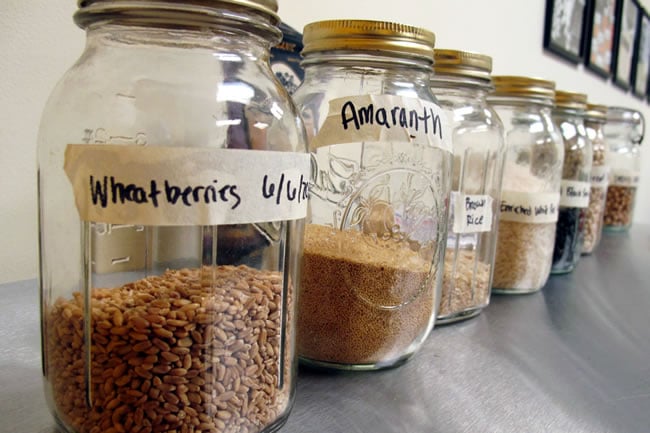
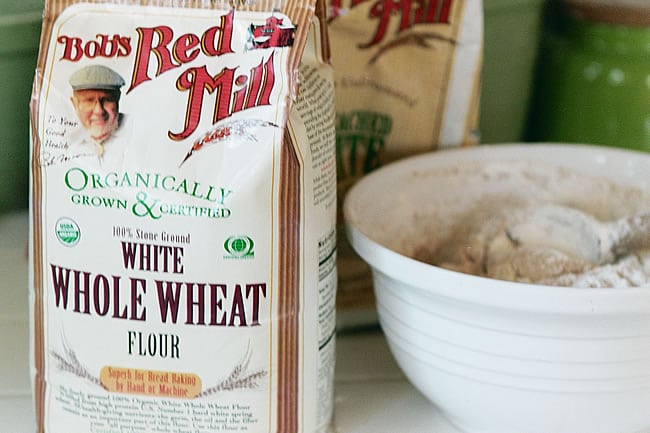
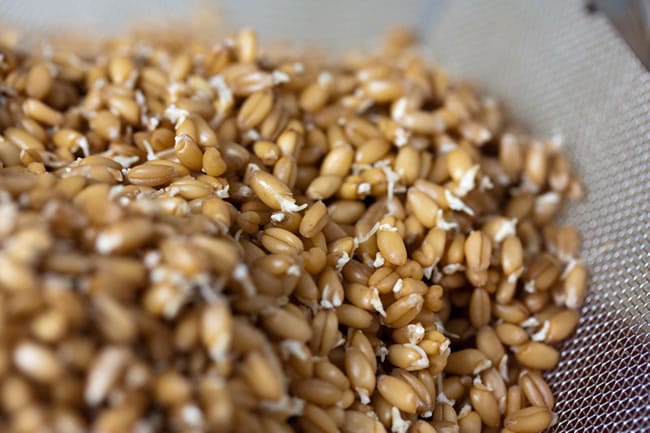
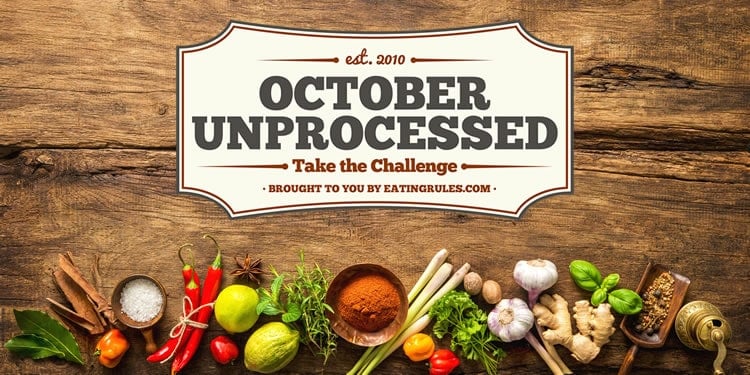
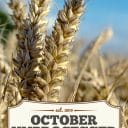




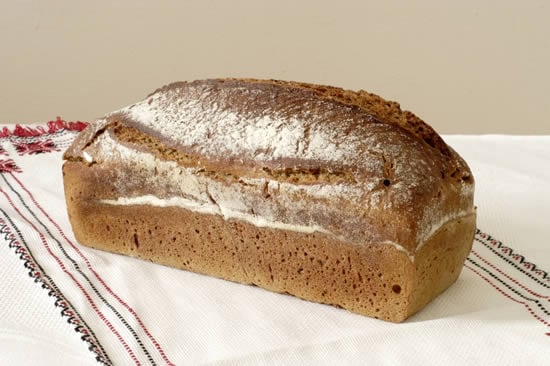















Does the warning about sprouts apply to home sprouted sprouts as well?
We love fresh sprouts.
I also chop them up fine and add to the cats’ wet food.
They seem to really enjoy them too (now one cat won’t eat some varieties of his can food without the added sprouts).
I also like the white whole wheat flour for the little baking that I do. Although we aren’t gluten intolerant, I like using almond flour as well.
Great post Andrew! There is so much confusion out there on flours. One note to add. When refined flours and other “enriched” products such as nutritional yeast are enriched, they use synthetic vitamins. A whole other can of worms in the world of food and nutrition. I discovered this a few months ago researching nutritional yeast. Found this out talking with Bragg, then called other makers. Was quite surprised. Not sure about you, but I don’t think synthetic vitamins are a good idea, and likely not passing the unprocessed test.
Excellent point, Sally, thanks! That is a pretty big can o’ worms, indeed…
Be careful of arsenic levels in brown rice. Some folk are advocating for white rice these days as it contains more arsenic in brown than white rice.
I eat pretty low carb, so rice and grains are not even on my radar anymore.
Apologies for the terrible use of the English language in the above comment! Brown rice contains more arsenic than white rice is all I meant to say!
Andrew, can you comment on the white whole wheat (newly named ivory whole wheat) vs red? You mentioned no nutritional difference, but I thought I had read/heard somewhere that there could be a difference in the glycemic load/index…I could be wrong. LMK if you know anything about this or the nutritional info on a deeper level. I’m always still researching the flour used for Indian chapattis (a much more common household bread than naan) and those bags are just usually not labeled well. But something tells me it’s much like or the same thing as the new ivory wheat……
I’m not an expert on glycemic load by any means, and everything I’ve found so far indicates that white/ivory and red wheat are nutritionally similar.. they may not be exactly the same, but it’s likely that any differences are negligible.
Considering the slightly denser texture of red wheat, it wouldn’t surprise me if it was a tiny bit harder (slower) to digest, though, so perhaps that does make a difference on the glycemic load… but I’d be surprised if it’s significant.
I read the comment on baking soda and baking powder with interest. It may not be something we would compound at home, but people have been using them for a long time. I think if my great-great grandmother would recognize it as a basic home cooking ingredient I will, too. My daughter-in-law works for a trona mining company; they produce the soda that ends up in much of our bakery goods, as well as industrial caustics. Soda is about as basic a product as you can find made from an ore, much like salt.
Is there a reason you do not include whole corn in your very helpful article? We grow and grind Painted Mountain Indian corn for our cornbread, etc.
HI Coreen – Impressive that you grown (and grind) your own corn! This post is meant to cover all grains, but since what is the most common (for flours, at least), I spend a bit more time on it. So there’s no particular reason I didn’t include corn in this post, except that I don’t think I’ve been asked about it, specifically, before! 🙂
What about things like baking soda or powder? They aren’t something I would make from scratch.
This is one of those that you’ll need to decide for yourself what’s right for you. I personally give baking soda and baking powder a “pass” – as long as they don’t have cornstarch added. I discuss it a little bit in the Unprocessed FAQ for Additives & Other Ingredients, and also a good conversation in the comments here.
I love cornbread. Can I make cornbread with any cornmeal?
Yes, I believe so — but double-check the ingredients and make sure it’s just corn! I’d also recommend Organic if possible.
I am actually looking for guidance on baking with whole flours. I typically use sprouted whole spelt flour, but my muffins are kind of “too healthy” for the kids and a little dry. Do you have any tips to help us use the whole flours? Thanks!
I’d give white whole wheat a try. Sprouted whole spelt flour is going to be quite a bit more dense — the white wheat has a somewhat lighter flavor and texture.